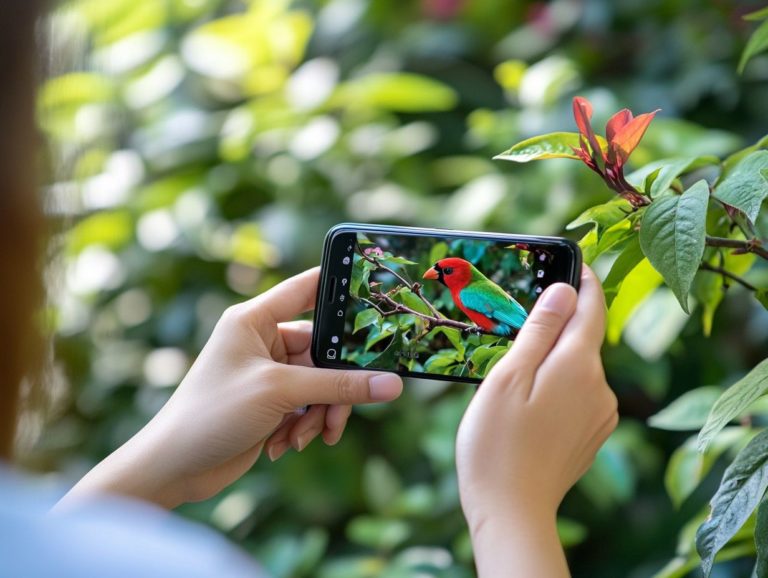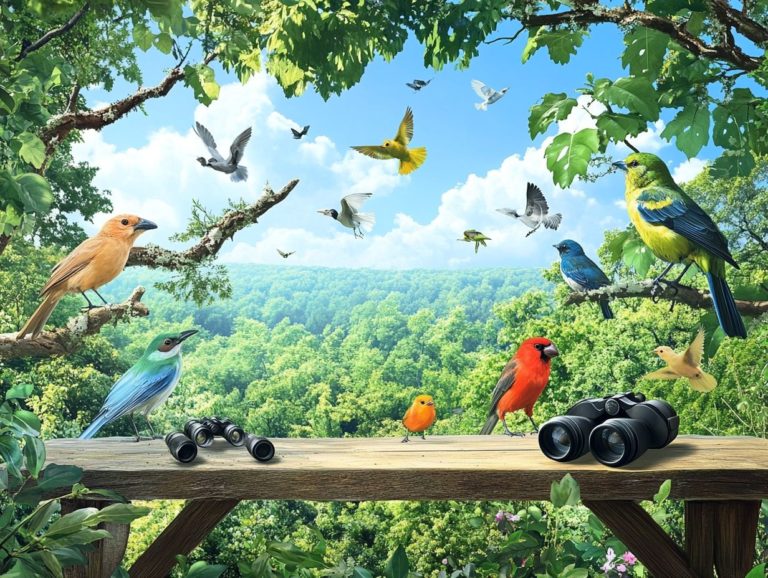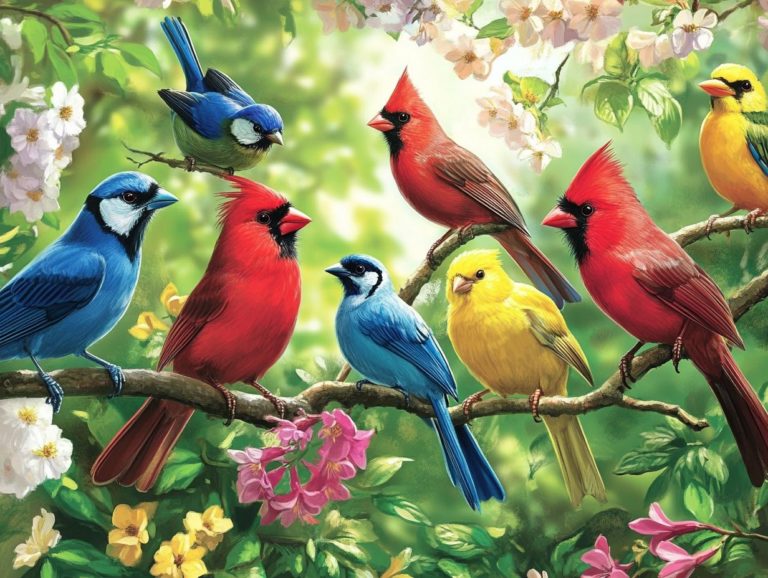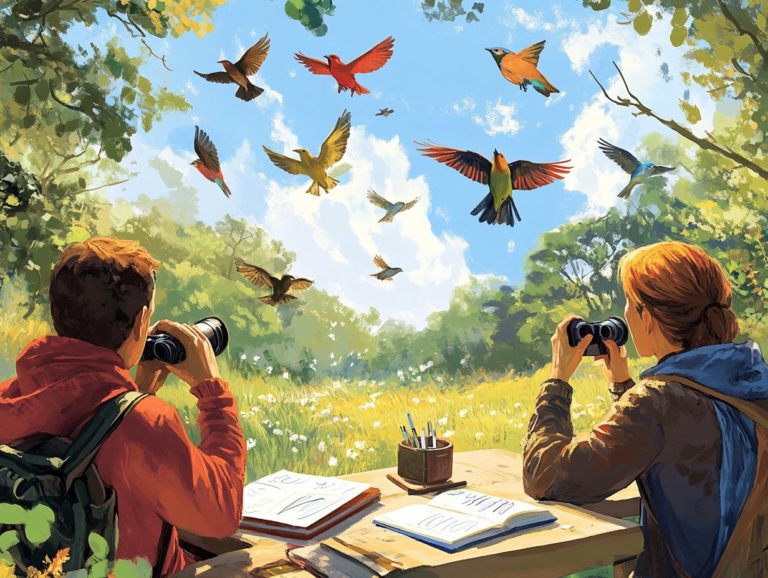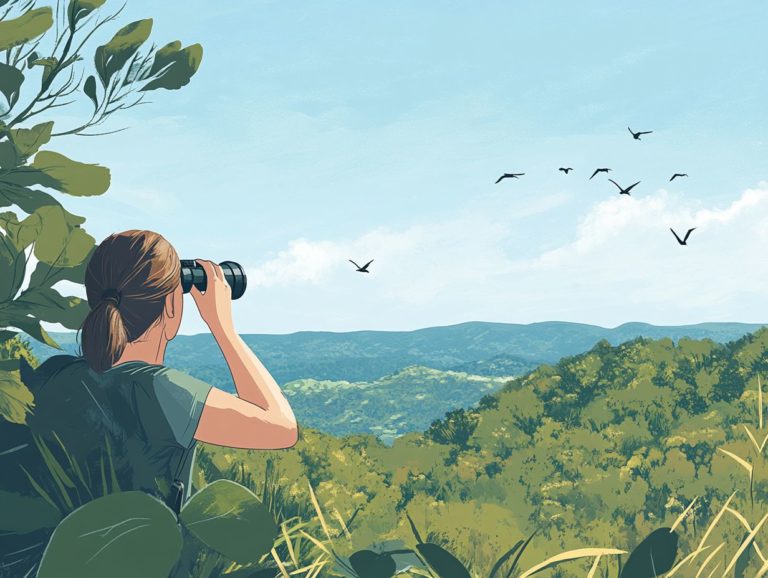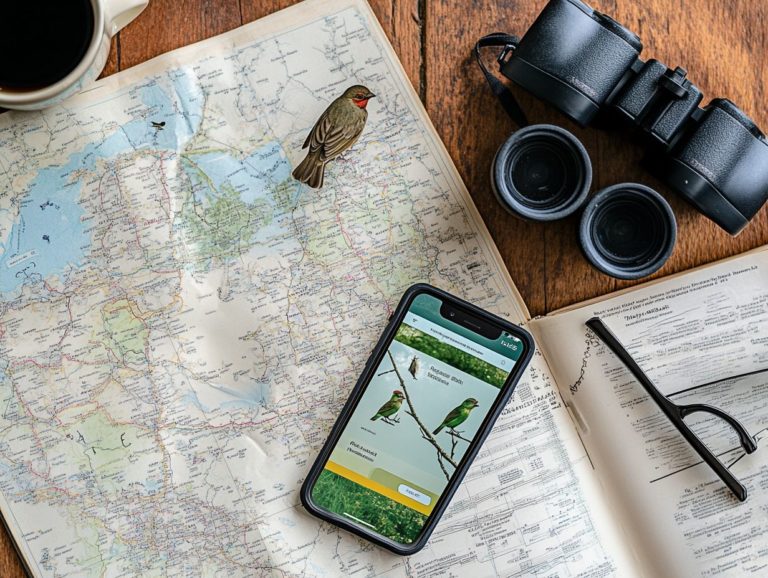Can Kids Get Involved in Bird Watching?
Bird watching is an enriching activity that invites you and your children to connect deeply with nature while nurturing their curiosity. It fosters a sense of wonder about the bird world, promoting patience, keen observation skills, and appreciation for the environment.
This article will guide you on how to get started with bird watching. We’ll outline the essential equipment you’ll need, tips for identifying common birds, and the best habitats to explore with your kids. You ll also find ways to record and share observations, ensuring that young bird watchers engage with nature responsibly and respectfully.
Embark on this delightful journey of bird watching with your family!
Contents
- Key Takeaways:
- Benefits of Bird Watching for Children
- Getting Started with Bird Watching
- Identifying Common Birds
- Exploring Different Habitats
- Recording and Sharing Observations
- Staying Safe and Respectful in Nature
- Frequently Asked Questions
- What ages can kids join in the fun of bird watching?
- What are some ways for kids to get involved in bird watching?
- How can I teach my child the basics of bird watching?
- Are there any resources available for kids interested in bird watching?
- Can bird watching be educational for kids?
- How can I make bird watching fun for my child?
Key Takeaways:
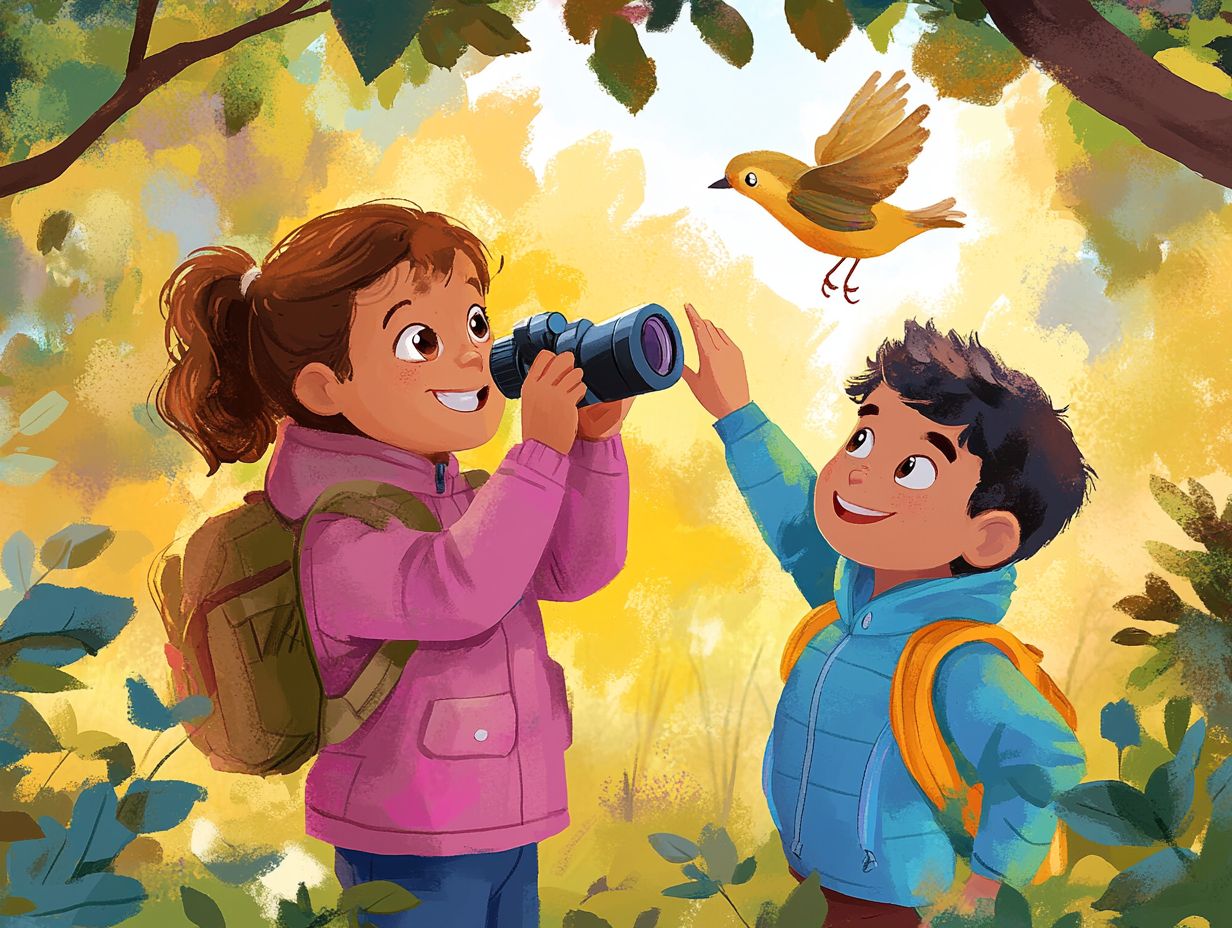
- Bird watching can provide numerous benefits for children, including fostering a love for nature, improving observational skills, and promoting curiosity.
- Essential equipment for bird watching with kids includes binoculars, a field guide, and a journal or checklist to record observations.
- Exploring different habitats, such as parks, forests, and wetlands, offers a diverse range of birds to observe, making it an exciting and educational activity for children.
Benefits of Bird Watching for Children
Bird watching presents a wealth of advantages for children. It deepens their connection to nature while honing their observational skills. Engaging in birding activities sparks curiosity about wildlife and offers health benefits through outdoor exploration and physical activity.
Children thrive on interactive learning experiences, which can be enhanced by educational materials about different bird species and their habitats.
Getting Started with Bird Watching
Embarking on the journey of bird watching is exhilarating! It invites you to explore the rich tapestry of bird life, especially in the picturesque parks and natural habitats of Seattle.
To elevate your experience, invest in essential equipment such as high-quality binoculars and comprehensive bird guides. These tools help you accurately identify various species and enhance the joy of your observations.
Essential Equipment and Supplies
Essential equipment for bird watching includes high-quality binoculars, which allow you to get a closer look at your feathered friends, and bird feeders that attract various species to your backyard. Bird books and birding apps are invaluable resources for identifying birds and documenting your sightings.
Consider incorporating a notebook for jotting down observations and sketches to fully immerse yourself in this delightful hobby.
Engaging kids in bird watching can elevate the experience even further! For instance, crafting DIY binoculars from cardboard tubes can spark their creativity. Setting up a birdhouse creates a welcoming environment for birds, making your backyard viewing more rewarding. You might also use a bird feeder to attract local feathered friends.
All these supplies enhance your birding experience and foster a deeper appreciation for nature s wonders.
Identifying Common Birds
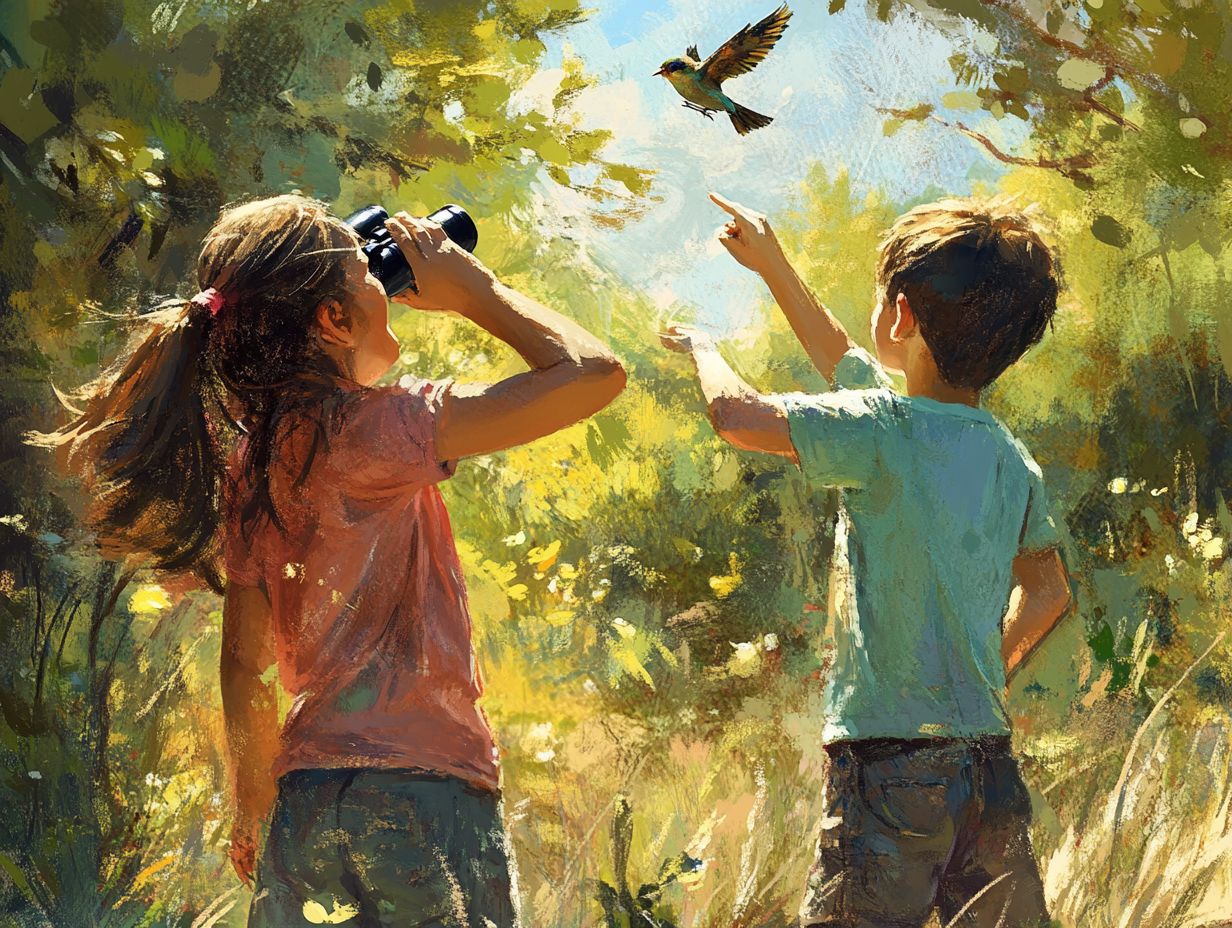
Identifying common birds is a rewarding skill that enriches your bird-watching experience. It fosters a deeper appreciation for the diverse bird species in your environment.
Employ effective birding strategies such as familiarizing yourself with local bird guides, participating in community programs, and engaging in events like the Great Backyard Bird Count to significantly enhance your identification skills.
Take the first step today! Visit a local park or participate in a bird-watching event to experience the joys of this wonderful hobby.
Birdwatching Techniques You Can Try
Identifying birds can be a thrilling adventure! Using effective birdwatching techniques can significantly boost your chances of success. Observe bird behavior, listen to their songs, and practice sound recognition to help identify various species in the wild.
Take a moment to notice their flight patterns and feeding habits. These details offer essential clues to their identity. For example, observe how they move: do they flit about restlessly, or do they soar gracefully?
Bringing a quality pair of binoculars helps you examine birds up close without disturbing their natural habitat. Pay attention to their distinctive calls and songs to sharpen your recognition skills. Many resources, such as field guides and apps, provide audio samples that are invaluable for comparison.
Engaging with local birding communities enriches your experience. Sharing insights and observations often reveals helpful tips and tricks from fellow enthusiasts!
Exploring Different Habitats
Discovering various habitats is vital for understanding the complex environments that support diverse bird species, whether they reside in wetlands, woodlands, urban parks, or rural farmlands. This exploration enhances your understanding of wildlife habitats and biodiversity.
As a wildlife enthusiast, you ll find that each environment offers unique birding opportunities and hotspots where specific species thrive, enriching the tapestry of biodiversity.
Best Places for Bird Watching with Kids
Finding the best spots for birdwatching with your kids transforms the experience into something enjoyable and educational. Local parks and nature reserves in Seattle, including the Audubon Center, provide fantastic opportunities for family outings that foster a love for wildlife and the outdoors.
Among these vibrant locations, Discovery Park features expansive trails and diverse habitats, ideal for young explorers eager to spot local bird species. Lincoln Park also offers lush greenery and picnic areas for all-day family adventures.
Community resources like the Seattle Audubon Society organize engaging events aimed at families, making it easier and more enjoyable for children to connect with fellow birdwatchers. These experiences create lasting memories and enhance the educational journey, instilling a sense of stewardship for the natural world in your little ones. Don t miss out on these opportunities!
Recording and Sharing Observations
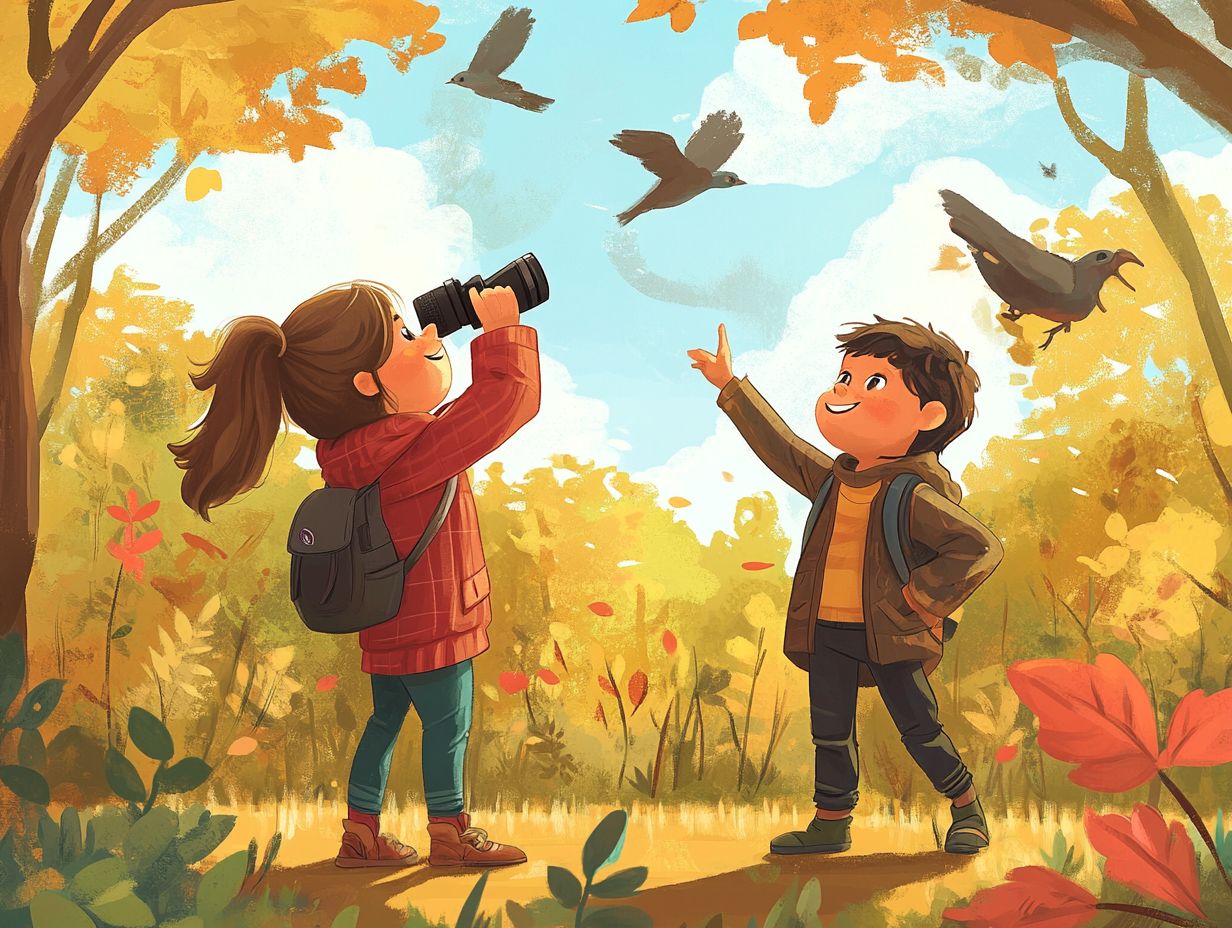
Recording and sharing your observations can elevate your birdwatching experience, turning it into a delightful journey. Document your adventures and exchange insights with fellow enthusiasts.
By creating a bird journal or checklist, you can effectively track the species you’ve encountered, the behaviors you’ve noted, and the diverse environments you’ve explored. This practice enriches your experience and fosters a sense of community among birders.
Creating a Bird Journal or Checklist
A bird journal or checklist helps document your birdwatching adventures and track the various species you encounter. This practice sharpens your observation skills and fosters a deeper connection with the natural world.
To start, include essential elements in your entries. Record the date and location of each sighting to better understand seasonal patterns and migration trends.
Note the species observed and any unique behaviors or interactions that catch your eye these details offer fascinating insights into their habits. Sharing observations about the habitat or environmental conditions surrounding each sighting deepens your appreciation for every encounter.
Maintaining this journal builds a valuable resource that educates and inspires others, transforming your passion for birdwatching into a rewarding endeavor for all nature enthusiasts. Grab your binoculars and start birdwatching today!
Staying Safe and Respectful in Nature
Maintaining a safe and respectful presence in nature is essential for fully enjoying the art of bird watching. This also helps safeguard wildlife and their habitats. By learning safety tips and proper etiquette, you ensure that both you and the pristine environments you explore remain undisturbed and flourishing.
Important Rules and Etiquette
Understanding birding etiquette is important for a harmonious coexistence between bird watchers and wildlife in shared environments. Remember to respect wildlife habitats, maintain a safe distance, and minimize disturbances to bird species.
If you love bird watching, use binoculars or spotting scopes instead of getting too close. Approaching birds can stress them. It’s important to resist the urge to feed them to keep them healthy and wild! Feeding disrupts their natural foraging behavior and leads to dependency on human-provided food.
You re also encouraged to stick to designated trails. This protects sensitive ecosystems and prevents trampling native flora. By following these practices, you contribute to the conservation of these magnificent creatures. Future generations will be able to marvel at the wonders of avian life.
Frequently Asked Questions
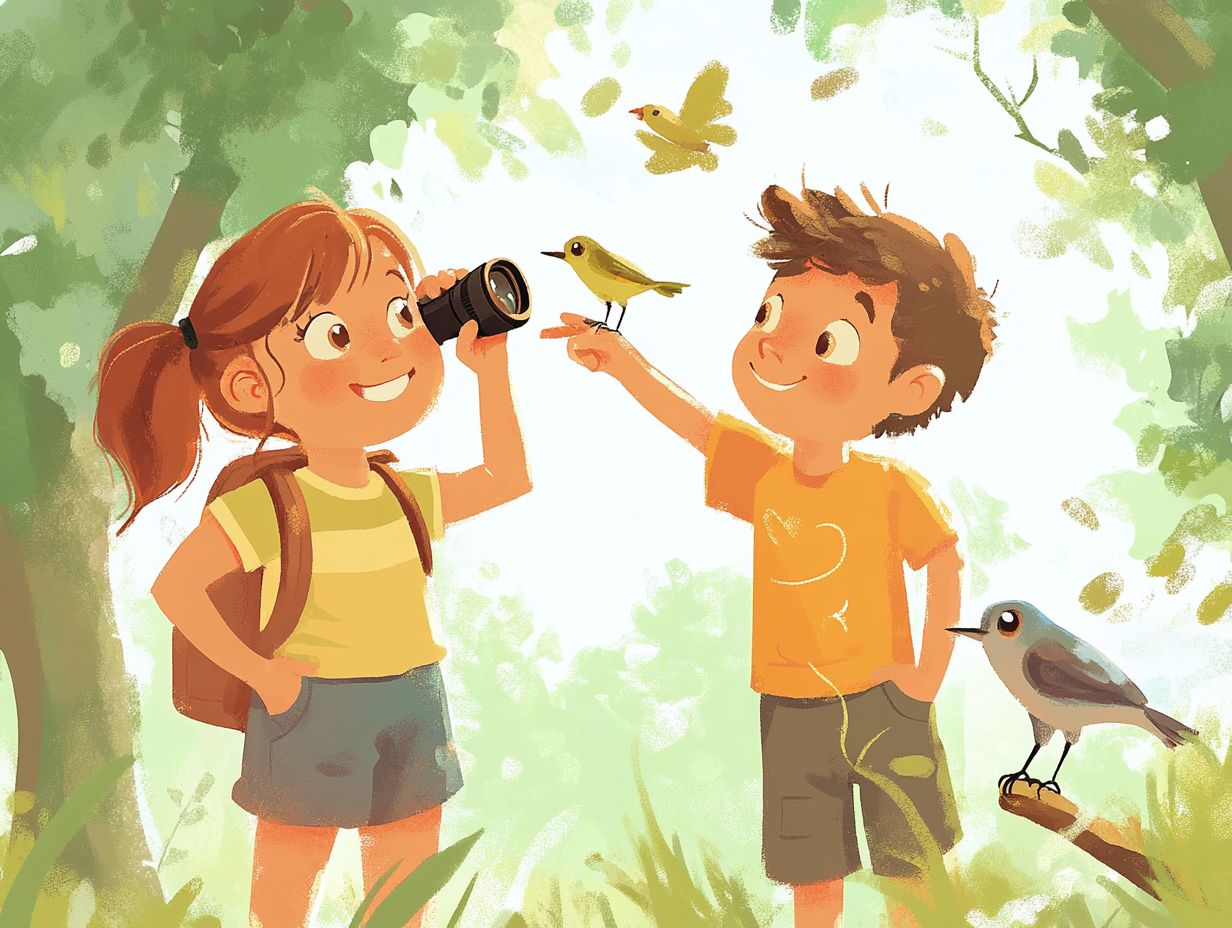
What ages can kids join in the fun of bird watching?
Absolutely! Kids of all ages can enjoy bird watching. Even toddlers can participate by spotting birds, listening to their songs, and learning about different bird species. For tips on how to teach kids about bird watching, explore engaging activities that make it fun for them.
What are some ways for kids to get involved in bird watching?
Kids can join a local bird watching club, participate in community programs, visit nature centers or parks, or explore their own backyard to observe wildlife. For more ideas, check out how to make bird watching a family activity.
How can I teach my child the basics of bird watching?
You can teach your child by showing them how to use binoculars, including DIY binoculars. Help them identify common bird species and listen to bird calls and songs.
Are there any resources available for kids interested in bird watching?
Yes, many resources are available, such as bird books, field guides, birding apps, and educational material specifically designed for children.
Can bird watching be educational for kids?
Absolutely! Bird watching teaches kids about nature, science, and environmental conservation. It also provides health benefits while enhancing their observation skills and attention to detail. To make the experience even more enjoyable, consider finding the right bird watching gear for kids.
How can I make bird watching fun for my child?
You can make bird watching exciting by turning it into a scavenger hunt, keeping a nature journal, or planning a birding trip to a new location, like a bird hot spot! Involve them in bird-related crafts and activities too.

